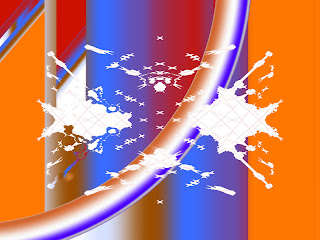In order to improve leadership effectiveness, it’s about harmony; to achieve harmony, it’s all about balance. To balance, it’s all about overcoming extreme thinking and a silo mentality by gaining paradoxical understanding.
Leadership is all about the future, there is a saying that there are leadership opportunities at any given point in time where one or more people congregate to realize the vision and achieve goals. This would support the “circumstantiality” between leadership and achievement.
Discovering the truth requires paradoxical analysis to understand the two sides of the coin, listen to the two versions of stories: Our complex world is a paradoxical reality. There is truth and myth, along with the mix of solid and flow; physical and virtual, voice and solitude, positive and negative, etc. On one hand, the world is becoming smaller due to the advanced technology to connect things and break down a variety of silos; on the other hand, the world perhaps also turns to be bigger than you could imagine. Whether you are vague about identity, or identity with vagueness, there are a multitude of issues that affect decision-making and action, in order to lead effectively, organizational leaders should learn from your own experiences, from others’ lessons, as well as collective wisdom, applying paradoxical intelligence to make decisions by refining information quality and opening for collective feedback, discovering the truth and un-puzzling the myths.
The reality today is complex, uncertain and ambiguous. People, especially leaders, must be open to learning and fresh knowledge. The paradox of leadership is about the balance of asking and answering; leading at the front and leading from the behind. Great leaders facilitate continuous conversations by questioning common beliefs or conventional wisdom; some of which have spawned whole new fields of inquiry. You don’t need to agree completely with the other side's viewpoint, but you can always gain empathy, insight, and new perspective to see things from the other angle, and practice paradoxical thinking to deepen leadership influence.
Paradoxical understanding and leadership improve strategy management effectiveness: Strategic planning and execution are a continuous cycle of organizational adaptation to a changing world. With today’s business velocity and frequent digital disruptions. The paradox of Strategy Management is that there is one side pressure to strategy to be holistic and comprehensive for capturing the big picture and understanding the interrelationships between varying success factors of the businesses. Besides a clarified vision, abstract level of guidelines, a comprehensive strategic planning needs to get to the level of specifically achievable goals. On the other hand, if you plan in detail as far ahead as the end state, much planning time and effort will be wasted. There are requirements for strategy to be simple and easy as the world becomes more dynamic, in order to keep things in order and achieve business excellence.
Without reliable information, strategy is misleading. Without a good strategy, information is trivial. It’s important to split a fine-crafted strategy into layers with different levels of information granularity, in which upper layers are holistic, covering all concepts, such as enterprise ontology and vocabulary; and lower layers are comprehensive - covering all attributes needed but for selected concepts only. Strategy related information is varying, it could be utilitarian, extrinsic, intrinsic, social, practical epistemic etc. With constant changes and unprecedented uncertainty, how to set the right priority depends on which of the business areas are most in need of improvement in the organization in question. The challenge is to prioritize what you know about and keep an eye open for signs of things you don't know about, and make adjustments if needed, for adapting to changes smoothly.
Paradoxical leaders can handle innovation paradox smoothly by striking the right balance of creativity and process; personalization and standardization: Business innovation has the characteristic of paradox. For example, efficiency and innovation just have to learn to live and function together. Efficiency will extract the maximum benefit from new ideas. The greater the efficiency of an organization, the greater the need is for creativity to maintain high performance in the long run. Same as the standardization vs innovation; innovation is outside-the-box; standardization is inside-the-box; organizations need to manage both well for moving up the next cycle of growth and balance.
There are paradoxes in managing innovation, the key is how to strike the right balance of breaking down outdated rules and setting digital principles; streamline divergent and convergent thinking; set standard but also present flexibility to encourage alternatives to problem-solving. It is important to have a heterogeneous group setting and let people view an idea from different perspectives, brainstorm diverse thoughts and ideas, apply paradoxical thinking techniques, harness different experiences, perspectives, and ideas of people, recognize innovators, encourage people to express themselves, brainstorm and share ideas, and inspire inclusiveness.
Compared to the previous eras, the digital era upon us is about abundance of information and empathetic personalization. To improve leadership effectiveness, it’s about harmony; to achieve harmony, it’s all about balance. To balance, it’s all about overcoming extreme thinking and a silo mentality by gaining paradoxical understanding. Leadership is about vision and directions that steer the organization in the right direction; leadership is also about alignment and integration interconnected with hidden clues to decide wisely and solve problems effectively.
The reality today is complex, uncertain and ambiguous. People, especially leaders, must be open to learning and fresh knowledge. The paradox of leadership is about the balance of asking and answering; leading at the front and leading from the behind. Great leaders facilitate continuous conversations by questioning common beliefs or conventional wisdom; some of which have spawned whole new fields of inquiry. You don’t need to agree completely with the other side's viewpoint, but you can always gain empathy, insight, and new perspective to see things from the other angle, and practice paradoxical thinking to deepen leadership influence.
Paradoxical understanding and leadership improve strategy management effectiveness: Strategic planning and execution are a continuous cycle of organizational adaptation to a changing world. With today’s business velocity and frequent digital disruptions. The paradox of Strategy Management is that there is one side pressure to strategy to be holistic and comprehensive for capturing the big picture and understanding the interrelationships between varying success factors of the businesses. Besides a clarified vision, abstract level of guidelines, a comprehensive strategic planning needs to get to the level of specifically achievable goals. On the other hand, if you plan in detail as far ahead as the end state, much planning time and effort will be wasted. There are requirements for strategy to be simple and easy as the world becomes more dynamic, in order to keep things in order and achieve business excellence.
There are paradoxes in managing innovation, the key is how to strike the right balance of breaking down outdated rules and setting digital principles; streamline divergent and convergent thinking; set standard but also present flexibility to encourage alternatives to problem-solving. It is important to have a heterogeneous group setting and let people view an idea from different perspectives, brainstorm diverse thoughts and ideas, apply paradoxical thinking techniques, harness different experiences, perspectives, and ideas of people, recognize innovators, encourage people to express themselves, brainstorm and share ideas, and inspire inclusiveness.
Compared to the previous eras, the digital era upon us is about abundance of information and empathetic personalization. To improve leadership effectiveness, it’s about harmony; to achieve harmony, it’s all about balance. To balance, it’s all about overcoming extreme thinking and a silo mentality by gaining paradoxical understanding. Leadership is about vision and directions that steer the organization in the right direction; leadership is also about alignment and integration interconnected with hidden clues to decide wisely and solve problems effectively.












































0 comments:
Post a Comment